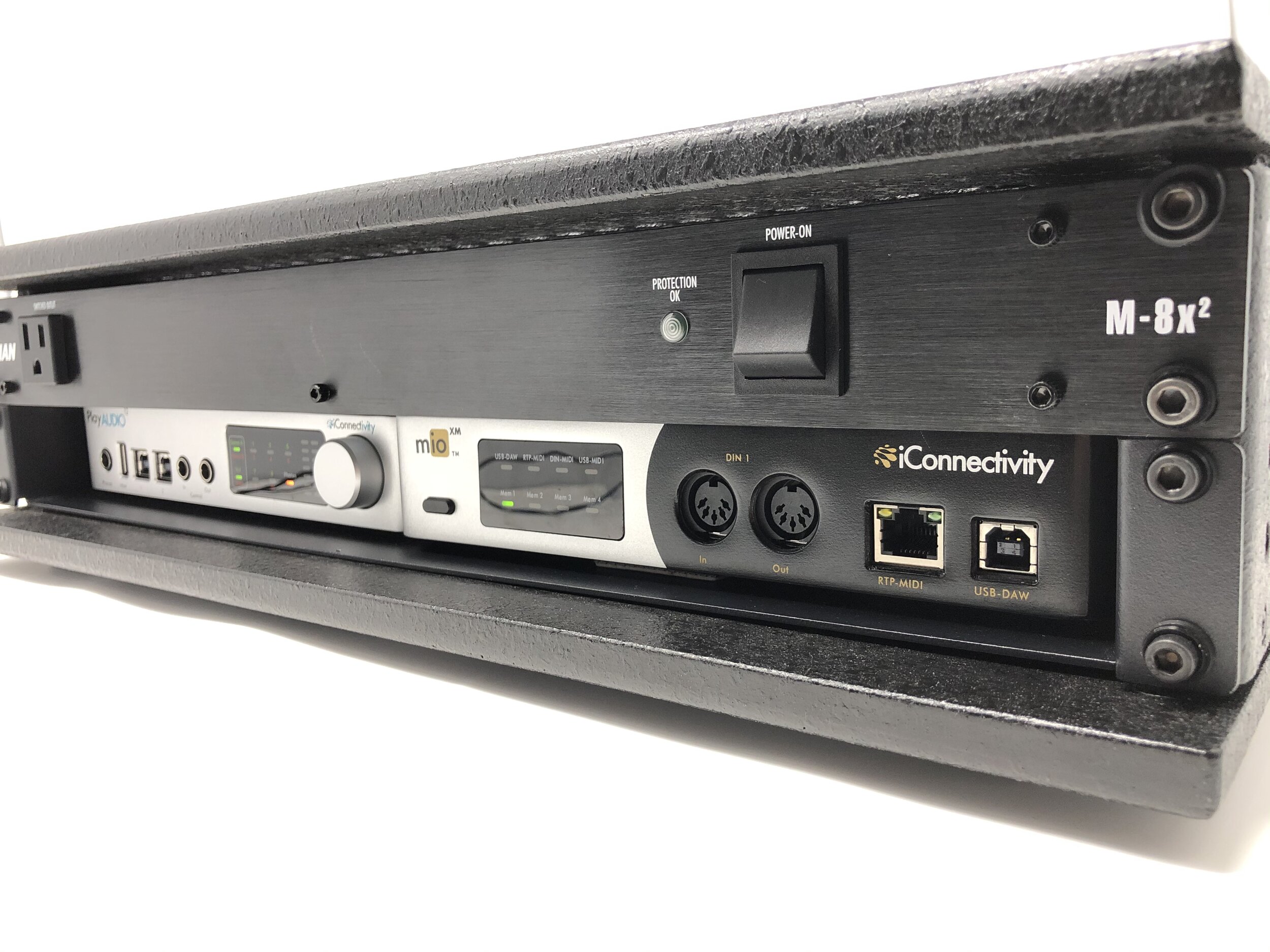mioX-series: your questions answered!
In October 2019, we dropped our most powerful, fully-featured and revolutionary MIDI interfaces to date; the mioX-Series. Headed up by the mioXL and its compact cousin, the mioXM, the new mio X-series heralds a whole new way of working with MIDI.
We’ve taken note some of your most frequently asked comments and questions, and in this blog, we hope to answer the most common queries about mio X-series and hopefully open your eyes to new creative possibilities.
Where have all the USB computer connections gone?
Of all the questions surrounding mioX-series, this is one of the most common. Our legacy interfaces, the mio4, mio10, iConnectMIDI2+ and iConnectMIDI4+ offered 2 to 3 USB computer connections per interface.
We’ve always offered our users the ability to connect multiple computers to a single MIDI interface, and we still do! mioX-series is built around networking technology, allowing you to connect to vastly more computing devices than before. With our new approach to network MIDI, it isn’t any more difficult to use, in fact it’s arguably easier and much more flexible.
So what’s the big deal with Network/RTP-MIDI then?
mioX-series marks our concerted commitment towards network technology as the future of inter-device communication. Well, we say the future, but we’ve already been incorporating Network/RTP-MIDI technology in our interfaces for some years now! Network technology itself has been around for decades….
Originally designed to provide robust and reliable network communication in event of nuclear war (no, we’re not making it up), network connection of computing devices is something which is now part of everyday life. Chances are you’re using it to read this blog piece, right now.
Network connections offer some significant advantages over USB, for example. Cat5/6 cables allow for huge connection distances; over 90 meters between devices! Compare that with 15 metres for DIN-MIDI and only 5 meters with USB and it’s clear to see the advantages for studio and stage.
Perhaps the biggest advantage with network connectivity is the ability to connect multiple devices on a network. Networking allows multiple connected devices to share data with each other; it’s a much more flexible way of working than the USB paradigm of Device => Host. Now multiple computers and peripherals can seamlessly talk to each other all over the same lines.
So what does this mean if you’re a musician or a technician? Well, thanks to something called RTP-MIDI, it’s possible to send MIDI data over an Ethernet network; LOTS of MIDI data in actual fact.
Let’s say you’re a live band, and your playback rig lives offstage; it may even live at the Front of House position. Chances are that’s too far away to connect via DIN or USB-MIDI to all your stage based MIDI gear. Wouldn’t it be great to have the playback rig command patch changes automatically though? Wouldn’t it be great to control the playback rig from the stage?
With Network/RTP-MIDI, that’s now entirely possible.
Simply drop a mioXL or mioXM anywhere you have physical MIDI I/O, run an Ethernet cable from each device to an Ethernet switch, connect the switch to your computer and BAM! Everything can talk to everything else!
The possibilities offered by Network/RTP-MIDI are far too great to fit into just this one blog piece, however, if your interest is piqued, we suggest you take a read of our blogs: Ethernet MIDI for Live Musicians and MIDI over Ethernet.
mio X-series is a paradigm shift in the way we think about MIDI interfaces. Cast aside everything you thought you knew about the limitations of MIDI and think again. Become the master of your own MIDI domain.
How do I connect my iPad? Where have the lightning connections gone?
It’s still possible to connect your iOS devices to the new mio X-series interfaces, it’s just that we’ve stepped away from the proprietary cables.
For those wishing to connect their iOS device, there are a few options:
Use apple’s Camera Connection Kit and connect directly to one of the USB ports on the mio X-series interfaces
Use a lightning to Ethernet adaptor
Connect your mioX Series interface to a Wi-Fi router and use our easy to use NetMIDI app to connect.
What about audio passthrough?
The iConnectMIDI2+ and iConnectMIDI4+ interfaces allowed for audio passthrough between an iOS device and another connected computing device. For those who still rely on this feature for their workflow, we recommend the iConnectAUDIO4+ which still provides audio passthrough and twin computer connections via USB




